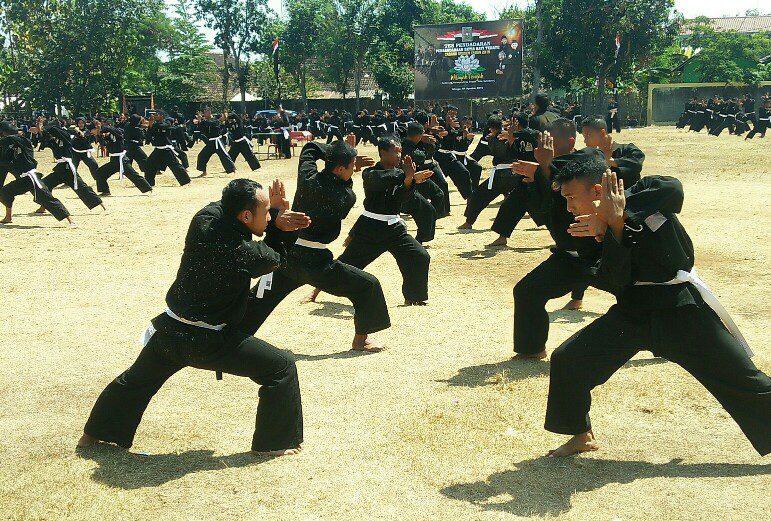The basic techniques of pencak silat – Silat is a traditional martial art originating from the Malay Archipelago. Martial arts are known in many Southeast Asian countries. For example Indonesia, Malaysia, Brunei Darussalam, Singapore, southern Philippines and southern Thailand. Indonesia itself has pencak silat which is a traditional martial art originating from this archipelago.
The term pencak silat consists of two words that have two meanings. “Pencak” means the basic movements of pencak silat with rules. Meanwhile, ‘silat’ means a complete martial art that originates from spirituality.
Every region in Indonesia has the term pencak silat, such as silek from West Sumatra, penca from West Java, pencak from Central Java and Yogyakarta, mancak Bali and mpaasila from West Nusa Tenggara (NTB).
This sport requires concentration and agility. In particular, each region in Indonesia has its own distinctive style of pencak silat. For example, West Java has the Cimande and Cikalong schools, Central Java has the Merpati Putih School and East Java has the Perisai Diri School.
For Sinaumed’s friends who want to learn this martial arts sport from Indonesia, you need to know the basic techniques. What are the basic techniques of pencak silat that need to be mastered?
The following are the basic techniques of pencak silat that need to be mastered:
Basic Techniques of Pencak Silat
1. Easel Technique
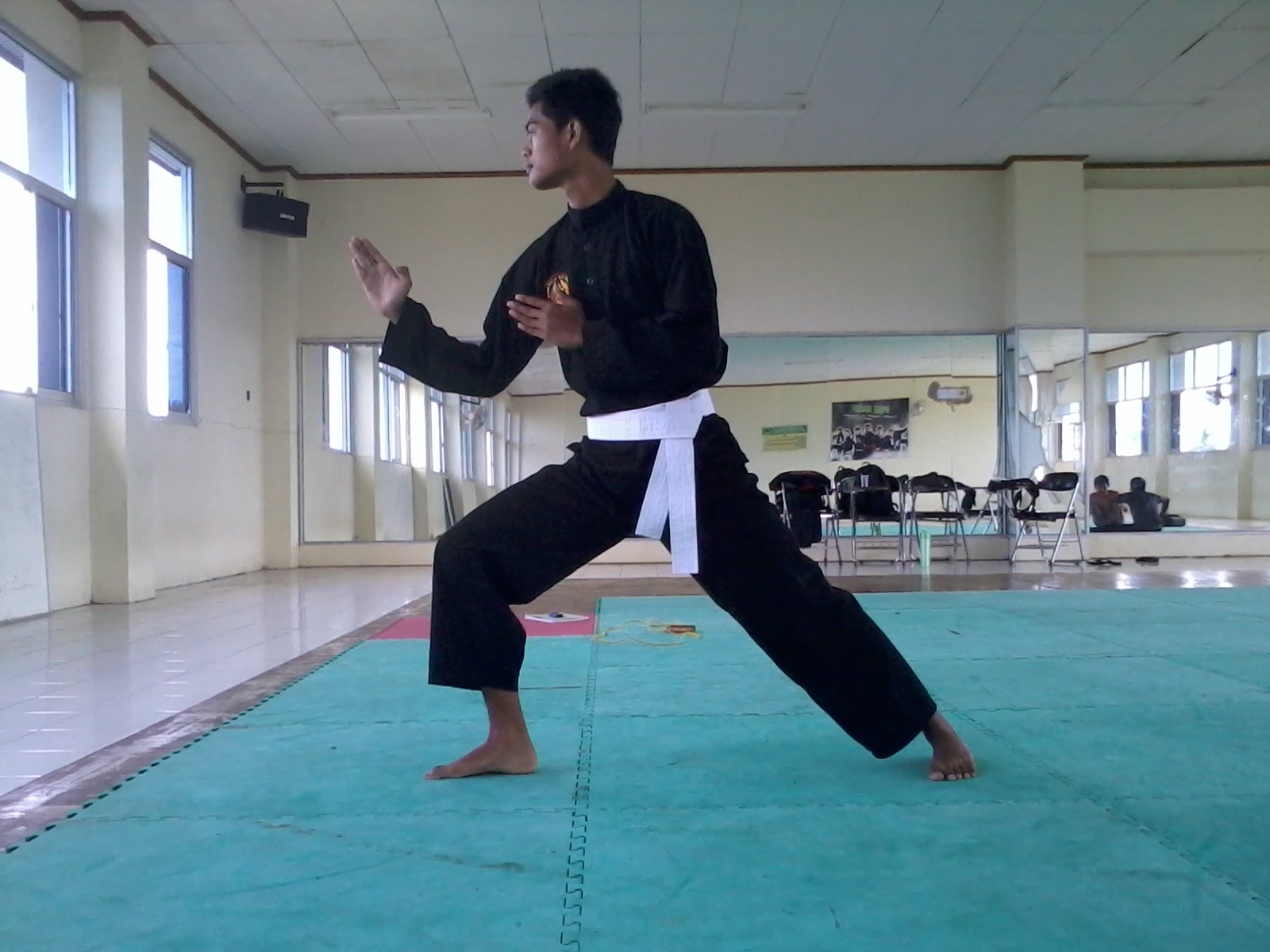
Usually the first basic technique of pencak silat is the stance technique. This technique is used to maintain the balance of the body to attack or defend. The trick is to put your feet on the ground. The stances are named because the position of the feet when performing this technique is the same as the position of the human feet on the horse’s back.
There are three stance techniques based on their shape, namely light stance, medium stance, and heavy stance. Based on the weight of the pedestal, pencak silat is divided into five parts, namely front stances, rear stances, middle stances, cross stances, and side stances.
2. Post Attitude Technique
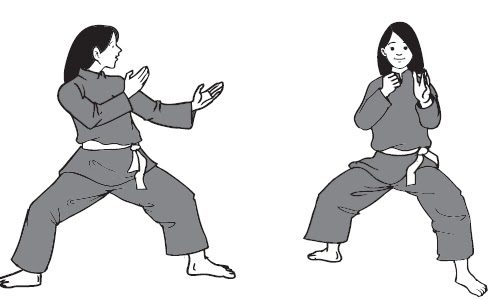
After being able to position the stance technique correctly and accurately, Sinaumed’s will learn how to do the stance technique. This technique is a combination of stance, footwork, and arm stance. This technique allows Sinaumed’s’ body position to be more flexible in attacking and defending.
The stance technique is a technique that combines arm and leg poses with or without a horse. However, it must be accompanied by total mental and sensory alertness. Because, the attitude of the tide is a prefix to launch an attack or used for self-defense (defense).
There are two types of tides, namely open tides and closed tides. Open pair stance is a stance in which the hands and arms do not protect the body, while closed court stance is a stance in which the hands and arms protect the body. This technique can be performed standing, standing or sitting. However, to learn, you need the help of a professional or coach.
There are 4 attitudes that can be trained hard to be able to master them perfectly. The following is a brief review of the 4 attitudes in question:
A. Install One
Pairs of one is an attitude technique in pencak silat where the fighter’s body position can be in an upright condition and both hands are at the sides of the body. In a state of ready martial arts, the fighter’s legs can be opened so that their width can be equal to the width of the shoulders.
B. Pair Two
Pairs of two is a stance technique in pencak silat where the position that needs to be formed by the fighter is with the body in an upright position while opening both feet shoulder-width apart. Not only that, make sure to position both hands in a fist and parallel to the waist; this is a bit different from pair one.
C. Pair Three
Pair of three is an attitude technique in pencak silat where the fighter needs to position the body exactly like when doing pair of two and make sure that the position is always perpendicular. Don’t forget to open your feet shoulder-width apart while raising your hands at eye level and make sure your fists are open.
D. Pair Four
Pairs of four is a stance technique in pencak silat in which fighters can form postures and also eyes as when doing pairs of three. The difference is only in the part of the hand that we can lift at eye level but in a cross position. The fist that was originally open can be clenched.
3. Step Pattern Technique

The step pattern technique is very useful so that the opponent does not easily guess our movements. This technique is done by changing the footsteps from one place to another according to a pattern that we arrange ourselves. Step technique requires a combination of body posture, hand posture, floor pattern, and foot pattern when stepping.
A. Straight Step Pattern
In pencak silat, the straight step technique is when the fighter takes steps to make a straight line. When forming a straight line, this can be done by moving forward or backward. Actually fighters can start from any of the positions mentioned above, especially from the middle position.
B. Zig-zag Step Pattern
In pencak silat, this type of zig-zag step is when the fighter moves to make a saw blade, aka zig-zag. In fact, fighters may start in the first pair position, where the ridges that form later are misaligned.
C. S-Step Pattern
In pencak silat, a standing competitor can perform an S-step with the point position pointing in a designated direction. The right leg slides toward the body weight on the right foot, then continues or follows the left leg. This step pattern movement basically combines 3 pose techniques that make the letter S. Using a combination of poses here includes side, back, and center poses
D. U Step Pattern
In pencak silat, the u or horseshoe stride pattern allows the fighter to start from a straight starting position and move the foot to the right, followed by stopping the left foot before the left foot stops advancing. Pull the leg back and close, then move left and pull the right leg close before moving forward. For the final step, pull your right legs back to bring them together and form the starting position.
E. Triangular Step Pattern
In pencak silat, this triangular step pattern is when the fighter moves to form a triangular plane. Usually this technique is done using 2 positions, namely the front position and the middle position.
F. Quadrilateral Step Pattern
In pencak silat, the quadrilateral step pattern is when the fighter moves using a combination of front and center stances, similar to the triangle move, only done so that the stances are prepared first. Then move forward using the middle stance and only then can the expected rectangular pattern of steps be formed.
4. Direction Technique or Eight Directions of the Wind
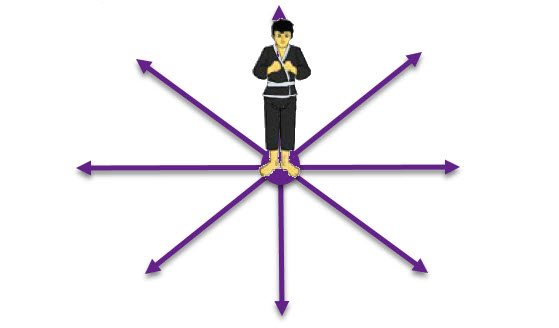
A fighter definitely needs the right direction of attack. The same goes for defending against an opponent’s attack. This technique works so that Sinaumed’s can determine the direction well.
This directional technique really requires an understanding of the direction in forming movements when attacking or defending. The direction of pencak silat must be understood as the direction of the 8 basic directions, namely the attitude or pattern of steps in the basic movements of pencak silat with the axis of rotation in the middle.
Sinaumed’s’ fulcrum is in the middle. Then Sinaumed’s can move in various directions like the eight main directions namely east, southeast, south, southwest, west, northwest, north, northeast. Or simply go backwards, left backwards, left sideways, left forwards, forward right forwards, backwards backwards right.
5. Kick Technique

Kick technique is a technique using the foot to attack the opponent. However, it is not uncommon for kicks to be used to defend against enemy attacks. Kicks or leg attacks in pencak silat can be done using the shins, soles of the feet and knees.
What are the types of kick techniques in pencak silat? Let’s discuss:
A. Straight Kick
This kicking technique is carried forward towards the target using the toe. Oh yes, make sure Sinaumed’s’ legs are straight and his body is straight too. The body facing the opponent and the foot used to attack the opponent is the base of the toes.
B. Circular Kick
While kicking with the instep, Sinaumed’s will do a circular kick. For example, Sinaumed’s kicks using his right foot, the left foot is used for left stances.
Then the right leg is kicked to the side. The part of the opponent’s body that is in contact with the instep, Sinaumed’s friends . To balance Sinaumed’s’ body , place both hands in front of his chest. Don’t forget to make sure there are stomping feet, Sinaumed’s.
C. Jejag Kick
This kick is also known as a jejeg kick (in Javanese) or a gejos kick. This kick makes the opponent’s stomach a target. Kicks are executed by lifting the knee as high as possible and pushing the foot into the opponent’s stomach.
D. Crescent Kick
The sickle kick is done by hitting the opponent’s stomach with a curved trajectory like a crescent moon.
E. Kick T
Take Sinaumed’s to the side and kick to the right. The opponent will be hit by the sharp soles of the feet and heels. There are three styles of T-kick, namely T-snaps, T-jump and T-hang .
F. Back Kick
Perform this kick with your back facing your opponent. Twisting while kicking the leg or heel to the opponent’s stomach or head.
6. Punch Technique

Punching techniques do not only exist in pencak silat but other martial arts also use this technique. Punch technique is an attempt to hit the opponent by using the hands. But Sinaumed’s definitely understands, how to execute the right punches? Don’t let Sinaumed’s intend to attack your opponent by attacking the heart which can make your opponent injured by using the wrong punching technique. There are several types of punch techniques, namely:
A. Front Punch Technique
This technique is a simple orbital. This punch can be done in two different ways. First the position of the feet in front, but hands parallel. Second, the position of the feet in front, but the hands are not parallel.
Some mistakes that are often made by fighters are stiff bodies, weak legs, looser hands, weaker strokes and an unbalanced body.
B. Pendulum blow
This stroke is called a pendulum movement, namely a blow with the hand moving from the bottom up. Bend your elbows at a 90 degree angle with your feet parallel or not parallel. The way to do a pendulum swing is to raise the middle horse. Then cross your arms in front of your chest.
Tilt your head and swing one arm forward to attack. Keep the other hand in the starting position to protect the body from the opponent’s attack. After the first stroke is finished, continue with the next stroke with the other hand. Remember, Sinaumed’s , the hand that was originally used to attack or used to defend.
C. Upright Punch
The target of an upright punch is the shoulder or shoulder joint. First, install the middle stance. Then place both hands in front of the chest (not crossing). Clench the fingers of the hand used to hit. Strike one hand upright. One hand remains in the starting position to protect the body. Alternate between right and left hands.
D. Circular Punch
Circle punch target is usually the opponent’s waist. As the name suggests, this punch is made by moving the hand in a circle. The movement of the shoulders and waist towards the shot can affect the quality of the shot.
E. Side Punch
This punch is directed to one side of the body using the back of the hand. The direction of the punch can be done sideways or forward but starting from the side.
7. Parry Technique
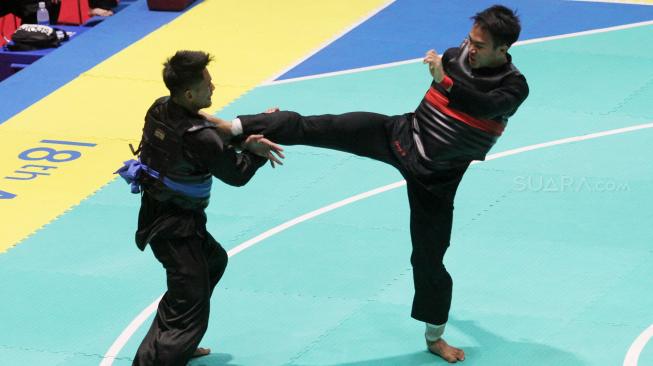
To defend, you need parry techniques. This parry technique aims to block or teleport the opponent’s attack, this technique is done by making direct contact with the body part of the opponent who is attacking.
Blocking techniques can use a combination of hand, arm, elbow and leg movements. Some of the parry techniques that must be mastered are outer block, inner block, upper block, and lower block.
A. One Arm Block
- Internal parry, parrying attacks from the outside in.
- External parry, parrying attacks from the inside out.
- Upper parry, intended to protect the head. Counter direction from bottom to top.
- Bottom parry, intended to protect the legs and thighs. Direction of parry from top to bottom.
B. Two-Arm Block
- Block two arms with the palms.
- Two-arm block with forearms.
8. Cutout Technique
The cutting technique is a technique of dropping the opponent by pinning both legs to the neck, waist, shins, and other targets on the body. There are three cutting techniques, namely the bottom cut, the middle cut, and the top cut. These three cutting techniques really require speed and accuracy of leg movements, and require the supervision of a trainer. It is best to do this cutting technique with a professional or your trainer to avoid the risk of injury.
9. Lockdown Technique
In addition to defending and attacking, fighters must master the death of their opponents. The locking technique or commonly known as the cutting technique can prevent the opponent from moving because his body is locked. Have you ever watched the WWE SmackDown fight ? In this battle, many locking techniques were demonstrated.
Locking technique is a technique to lock, control, and make the opponent powerless, unable to move, or to disarm the opponent. Movements can use a combination of hands, feet or other limbs by involving avoidance and capture to target the opponent’s body parts. Usually, the vital body parts that are targeted are the neck, shoulders, chin, arms and wrists.
10. Lying Technique
The lying technique is intended to train the ability to fall as well as a means of self-defense. There are three types of lying techniques, namely:
- The oblique attitude is done by bending while bending the legs to bring them closer to the chest. The line of sight should be straight, while the other leg is used to support the body. One elbow is on the floor and the other hand is used to support the thigh.
- The supine position is done by lying on your back while bending one leg, while the other leg is straightened. One hand on the ground bent at the elbow and the other on the chest.
- The prone position is done by turning the body, looking straight and awake. Straighten your legs, and at the same time touch the floor with both hands and bend your elbows firmly.

